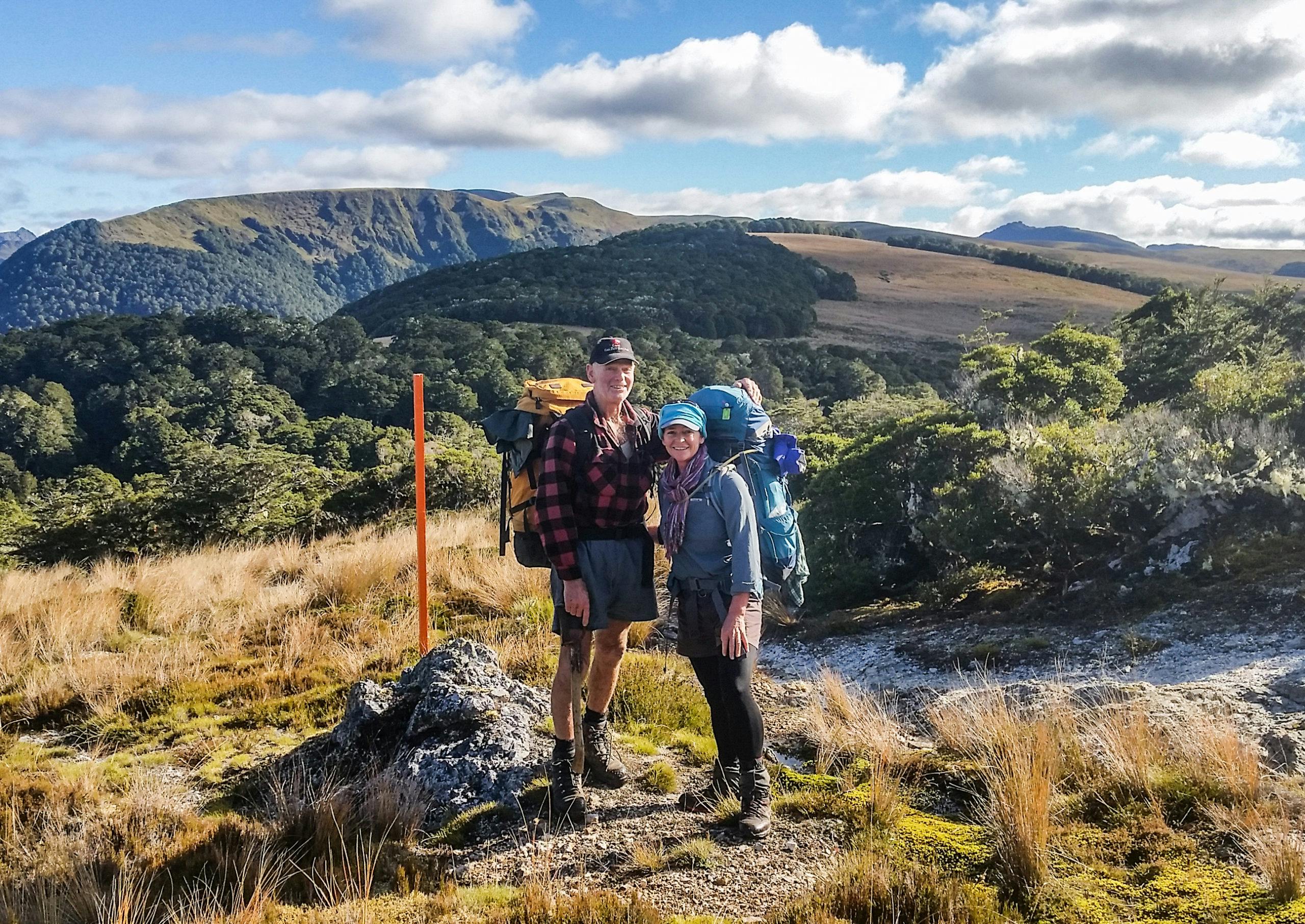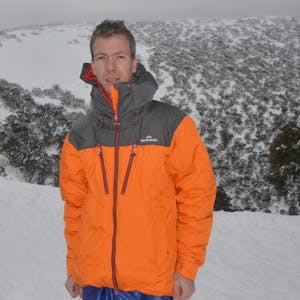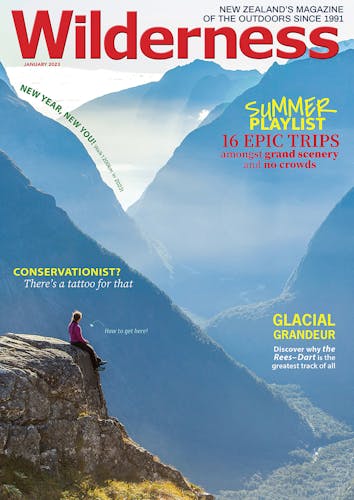Max Polglaze lived life for the backcountry. He carved tracks and built huts and shelters, especially in Kahurangi National Park, that have enabled legions of trampers to better enjoy their days.
There are things Max Polglaze did that could never be done today. There are things he built as a park ranger in the 1970s and 1980s that would never get signed off by the bureaucracy and ‘processes’ that would eventually drive him from the hills he loved so much.
Anyone who’s tramped in Kahurangi National Park would have seen – and marvelled at – Polglaze’s most famous handiwork, the Gridiron rock shelters. These nooks in the limestone that Polglaze somehow fashioned into magical sleeping quarters are the most unlikely abodes to wear a Department of Conservation (DOC) badge.
Design them today and you’d be laughed out of town, or threatened with arrest. But 40 years ago things were different. Visionaries like Polglaze could innovate and leave their mark on the patches of bush they adored. For him, that patch is Kahurangi National Park, known then as North-West Nelson Forest Park. If there’s one geographic region in the country that can be said to have ‘personality’, this is it. For that, so much is owed to Polglaze.
Today, the 82-year-old struggles to remember much of his extraordinary life. Dementia is cruel to the sufferer, and also to their family. Polglaze’s son Dan and his wife Vanessa spend every Friday with him. Dan says that reminiscing is hard for his father and that his strongest memories are from his deer culling days, before he became a ranger.
“His eighteenth birthday was spent culling in the Harper, around Arthur’s Pass,” Says Dan. “He was young and living life large. He enjoyed his own company and so really thrived in the bush.”
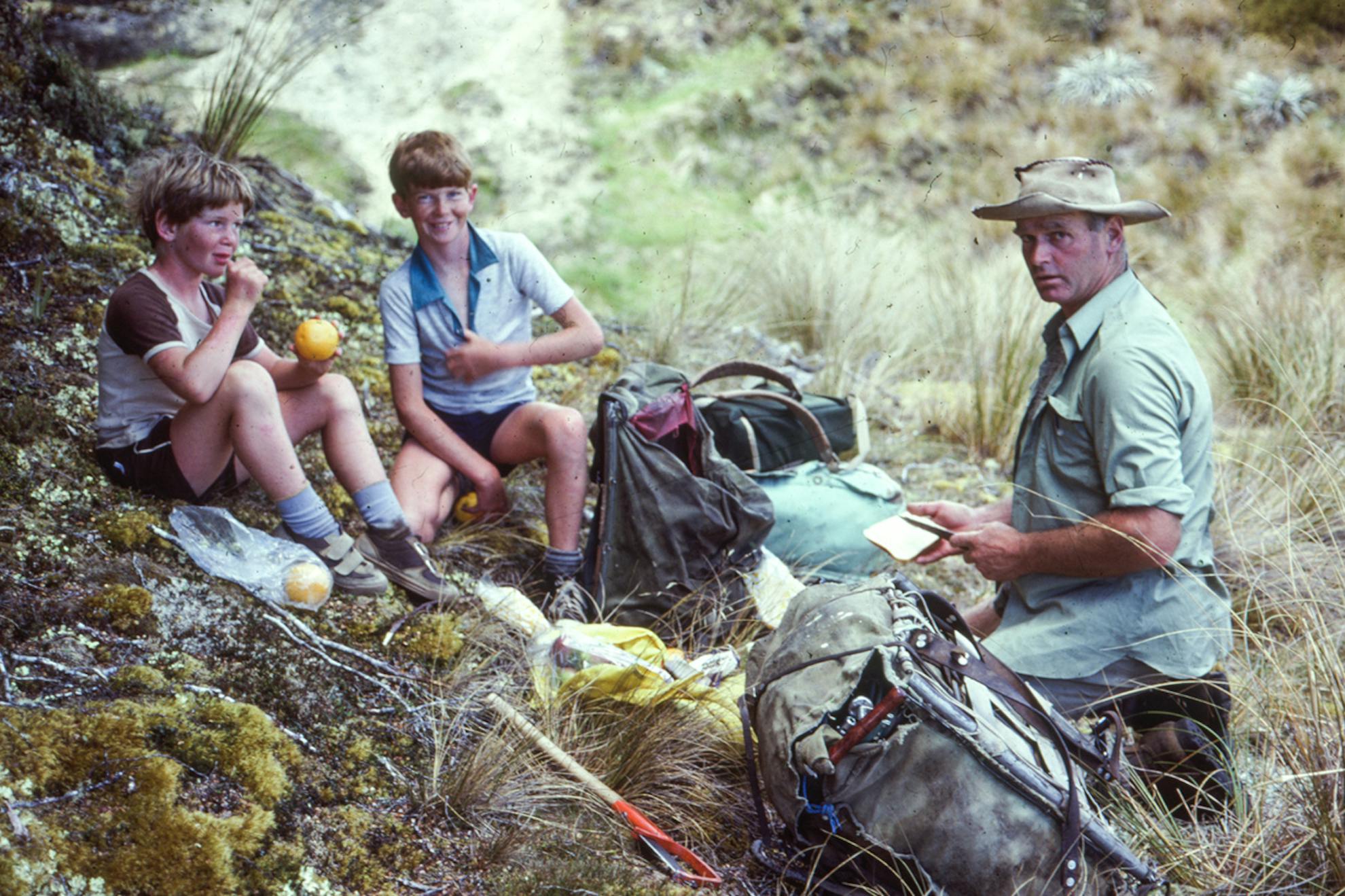
Polglaze became a New Zealand Forest Service park ranger in 1968 and kickstarted an era of infrastructure improvements that would make the rugged park accessible to all. Few rangers make a name for themselves the way Polglaze did, but he never chased recognition or notoriety. For him, the reward lay in seeing others share his love of the mountains.
Less talk, more work – that was the Polglaze ethos. Silence was his natural state. Dan says his father would sometimes hide behind a tree if he saw trampers approaching so he wouldn’t have to talk to them. But that’s not to say he wasn’t good with words. Polglaze recorded his entire life in diaries and wrote poetry. When he did speak, it was often profound. “He said he’d give his life for those mountains,” says Dan. “That was where he felt closest to God.”
In his 2020 book Tableland, author Ray Salisbury wrote that Polglaze “had the hands of a bushman, the head of an engineer, and the heart of a poet”. No one summed it up better.
Mark Donovan worked closely under Polglaze from 1977. He recalls the monumental effort that went into building the Mt Arthur Track. “All the work was done with pickaxes, rakes, spades and quite a bit of explosives. Chainsaws and rifles were my constant companions, and the potential for things to go wrong was ever-present. Virtually none of what we got up to back then would be allowed today.”
Donovan paints Polglaze as a leader and a mentor, a deep thinker and a man who never shied away from hard work. “I was in awe of what this bloke could achieve. An idea would come to him and he’d just do it. He might say one day, ‘Let’s build a platform halfway down the Leslie Hill on top of this bluff with magnificent views up the Peel River.’ And for months we’d drill and blast, living under canvas, slowly chipping away at the rock. It was mighty hard work, but well worth it. At the end of the day Max would bake delicious camp oven bread.”
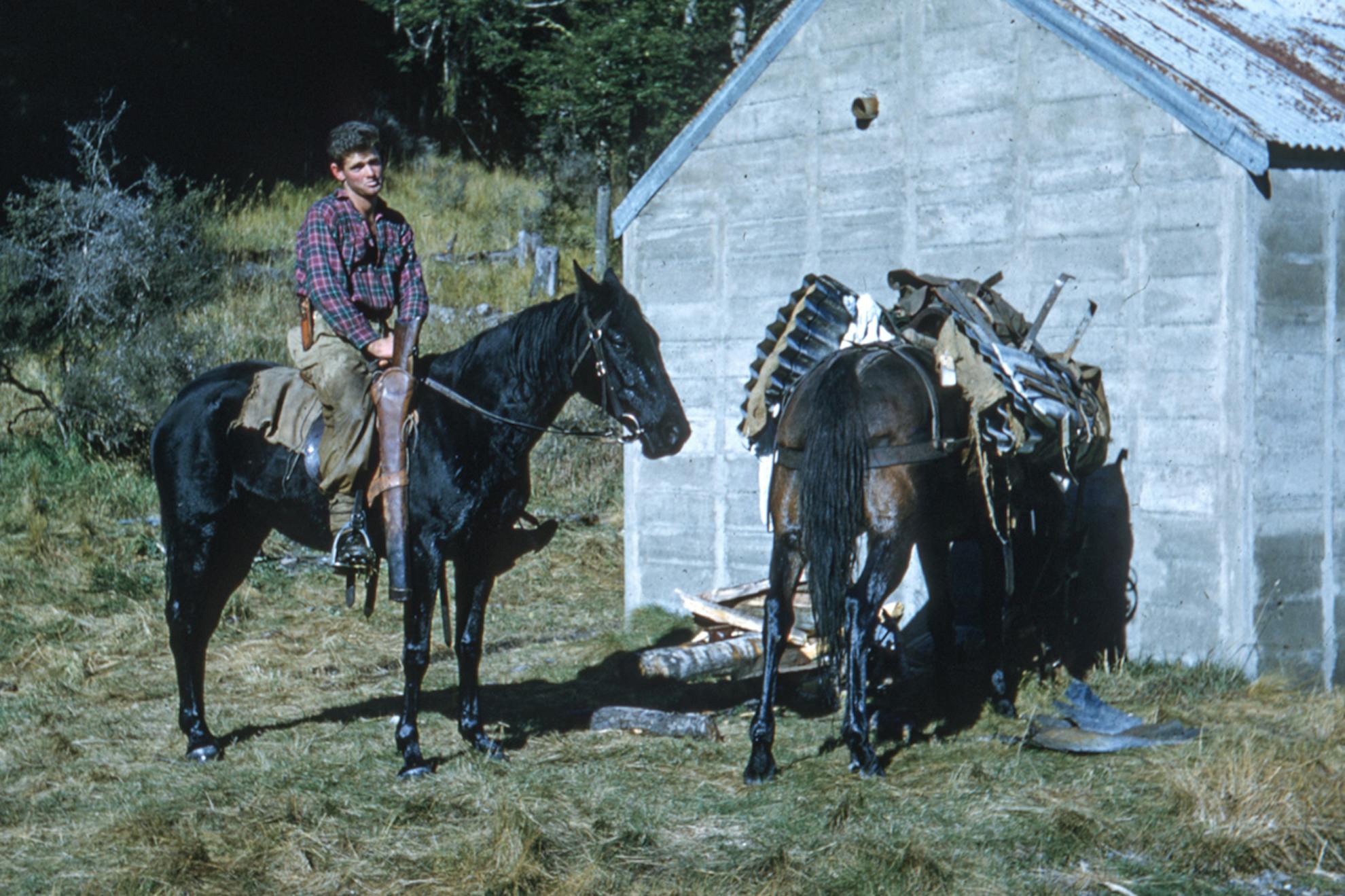
He says Polglaze shielded his workers from the “ever-encroaching tentacles of bureaucracy” for as long as he could. Polglaze saw the introduction to the workplace of two-way radios as the beginning of the end, signalling the loss of their isolation and autonomy. The walls were closing in on their private world up in the hills. DOC took over in 1987. A year later, aged just 49, Polglaze took early retirement.
Retirement wouldn’t keep him out of his beloved mountains, though, and he found a way to put his unique skills to work, accepting jobs as a contractor restoring historic huts. In 1991, working largely on his own, he restored Cecil Kings Hut, an old miner’s hut on the Wangapeka River. In 1997 together with local builder Gregor Koolen he restored Asbestos Cottage, the former home of a reclusive couple, Henry and Annie Chaffey, who lived there between 1915 and 1951. In 2003 Polglaze took under his wing a local DOC officer, John Taylor, to restore Riordans Hut, an old cedar slab sheep grazers’ hut up the Kill Devil Track. The pair did it the old-fashioned way with manual tools, including a long-handled adze to split a dead cedar tree for the cladding. In all three restored huts Polglaze retained the unique character that gave each its charm. It’s unlikely to be a coincidence that these huts were once the homes of people who had a connection to the area that Polglaze could recognise. In restoring the huts he was not just preserving history for future generations but also honouring a breed not unlike himself; people who looked to the mountains and saw things no one else could see.
Some trampers are pushing for formal recognition of Polglaze’s work. Dave Barton remembers his first visit to Lower Gridiron Shelter in 1979. “I was overwhelmed,” he says. “It was a marvellous feat of creativity and engineering, so quirky and unexpected, with a double bed, an armchair and a swinging basket chair on a chain.”
Barton says Polglaze left his mark all over the mountains: in the linking tracks that make the area so accessible for everyone, in the character-filled huts and shelters, and in the strategically placed hand-carved signs. “He made it the usable country it is today.”
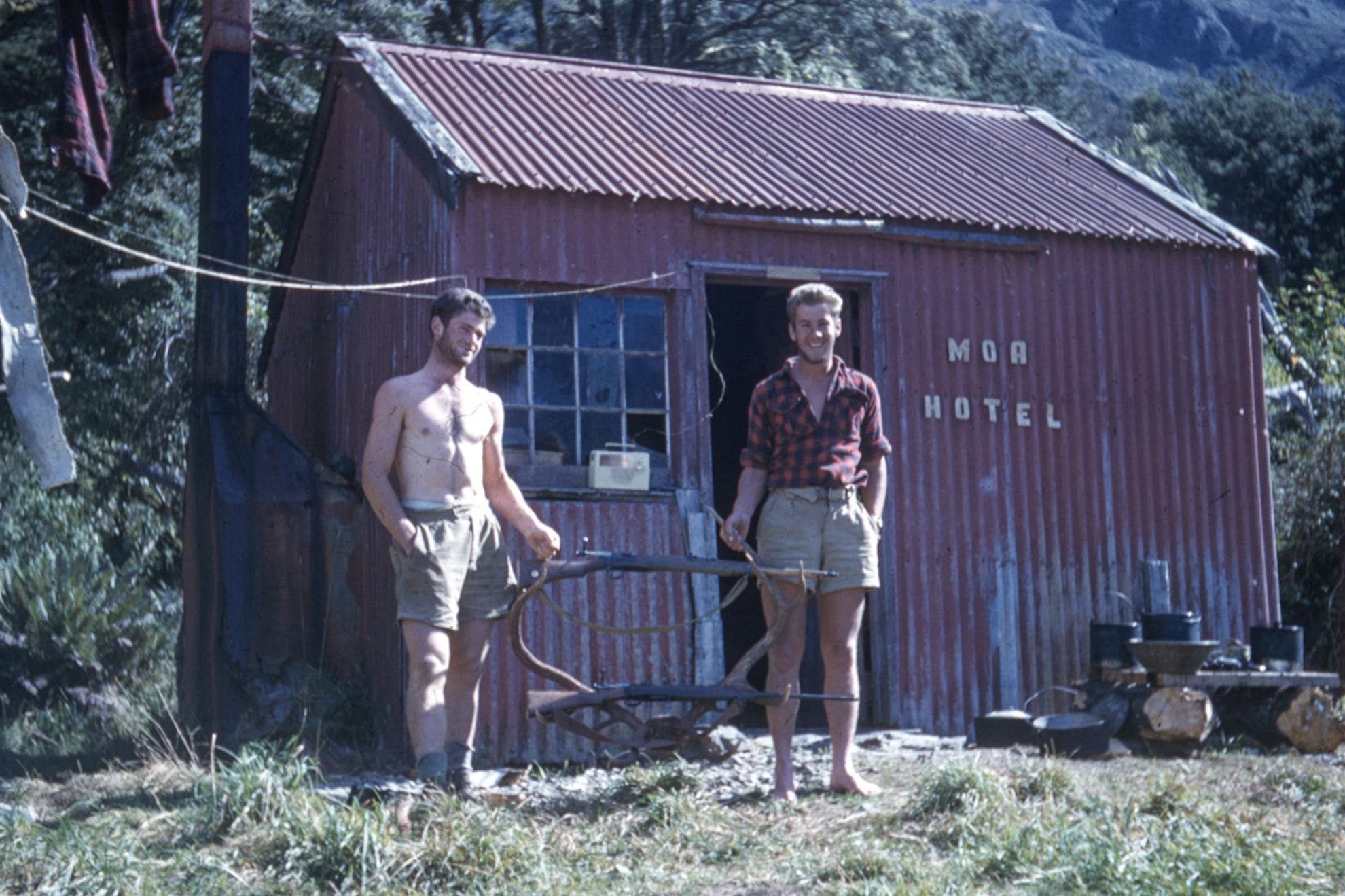
But he’s worried that Polglaze’s legacy will be lost. He wants the tracks that run between Flora car park, over the Tablelands and to the Leslie Valley to be named the ‘Polglaze Trail’, and is promoting the idea by walking the tracks with a cut-out picture of Polglaze’s face strapped to his pack. He leaves fliers in huts and in true Polglaze style even sticks up the odd sign without official endorsement. “It’s a bit naughty of me, but I want to see Max honoured, and have the ‘Polglaze Trail’ acknowledged. It was where Max worked his magic. We’ve got to keep it alive.”
Polglaze’s daughter Tracey doubts we’ll ever see people like her father again. Certainly few kids will have the childhood she did. “Dad said my first word was ‘helicopter’. He built a track to the bush from our house, and gave us a whistle to blow if we got lost. He built us a flying fox, carved a rocking horse out of a tree stump. He helped us develop a love of nature and birds.”
When her father’s memory loss began around 10 years ago, Tracey devoted time to taking him back to places where he felt most at home, retracing the tracks he knew so well in the Tablelands (many of which he cut himself, decades earlier). “We had these amazing adventures, just the two of us. We’d light a fire and I’d ask him questions and he’d tell stories. It was then that I really got to know Dad.”
At age 78 Polglaze covered 88km in nine days, travelling through his old haunts, including Splugeons Rock Shelter, the three-sided improvised shelter that he built and the place where he wants his ashes scattered. “He was on a high during that trip,” says Tracey. “It breathed so much life into him.”
Tracey is grateful for everything her father instilled in her: resourcefulness and creativity, how to work with what you’ve got to create something, or fix anything. She has thousands of happy memories of her dad, but one of the most special might have been an encounter the two of them had with a group of young trampers at Waingaro Forks Hut a few years ago. The trampers asked Polglaze about his life in the backcountry, and as a ranger. The man of few words needed just 10 to say it all.
“I wouldn’t have wanted to spend it any other way.”





